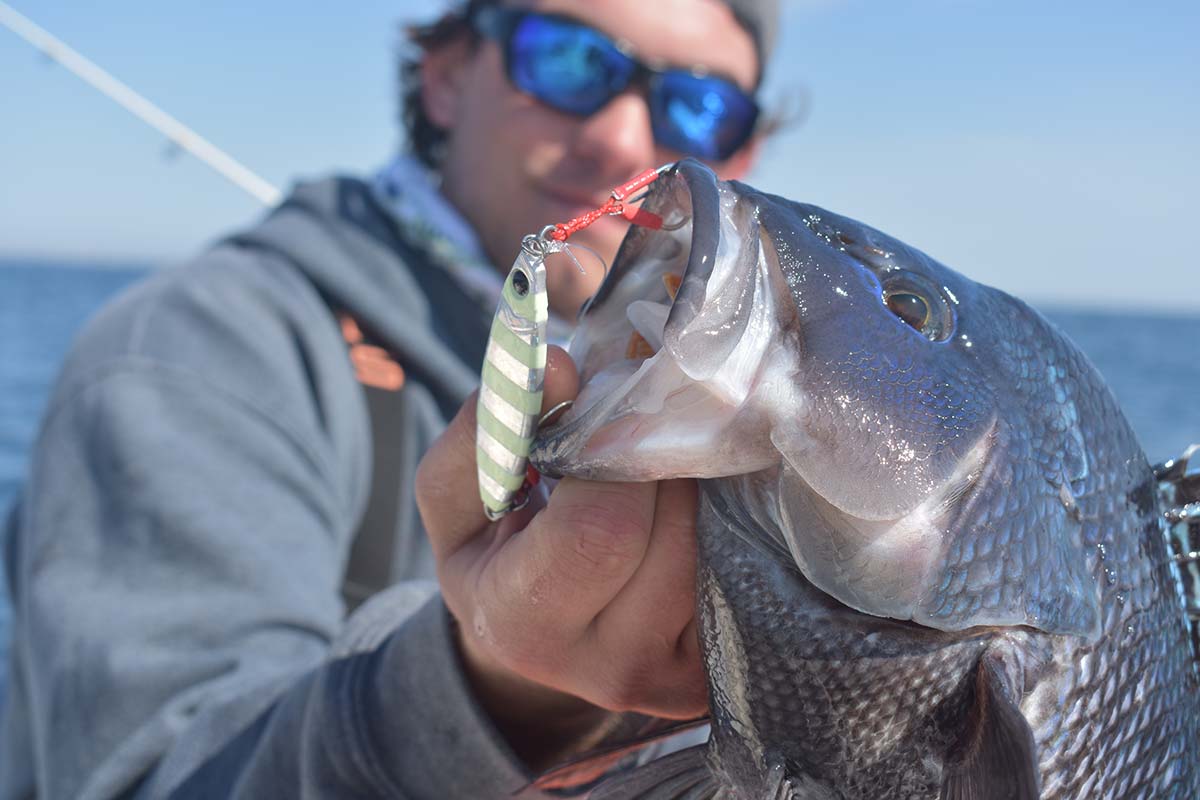
You may have heard of the slow pitch concept, but now’s it time you actually used it to your advantage.
The most recent stock assessment in 2016 indicates that spawning stock biomass of black sea bass is thought to be more than twice the targeted level, a good sign of a healthy, robust fishery. Still, even being the management success story that it is, the opening day of black sea bass season varies greatly from state to state throughout the New England and Mid-Atlantic management regions.
But if triple-headers and drop and reel action on humpbacks is something you’re looking forward to in the weeks or months ahead, maybe it’s time to ditch your traditional clam bait rigs and pick up a slow pitch jig for sea bass! You may have heard the term slow pitch jigging being thrown around a bit in recent years, but many may not be sure how to do it or what it even is. Essentially, slow pitch jigging is a style of jigging which not only uses its own technique but its own specifically designed jig as well. The bottom line is that it works, and it works well!
By most accounts, slow pitch jigging originated in Japan nearly a decade ago thanks to a man named Sato Norihiro. He was the first one who came up with the brilliant idea that the longer the jig hangs in the water column the more hostile fish will become and they will become more inclined to eat the jig. This soon resulted in the birth of the center weighted jig, commonly known as the “slow pitch” jig. This would be just the start of a newfound technique that would take bottom fishing by storm.
Slow pitch jigging is a style which hasn’t necessarily blown up over the past few years but is definitely becoming something which more anglers have started to become aware of as the industry continues to grow. The unique presentation and action of the jig as it dances through the water column, and its ability to hang on the drop is what completely separates it from all other styles. If you haven’t heard of or picked up a slow pitch jig before, you are going to want to stick around because your catch is about to double with just this one simple technique.
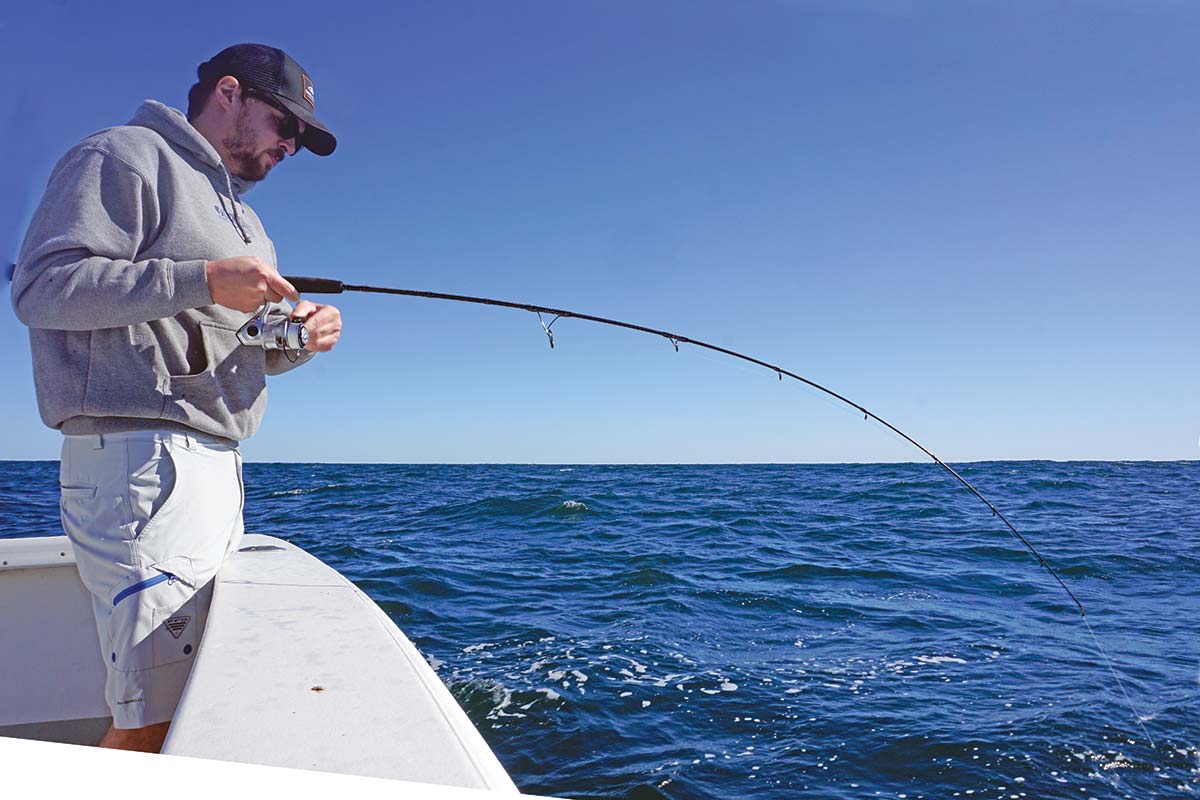
The Inside Pitch
For a technique which is fairly simple, there is a good amount of tactical information which you should probably familiarize yourself with first. First, you are going to need to learn how to identify and choose a slow pitch jig. The first giveaway that you are looking at a slow pitch jig is that the jig tends to come up in the middle to a point because it is center-weighted. A center-weighted jig allows for it to fall side to side and to hang on the drop, which gives it a much different action than your standard vertical jigs.
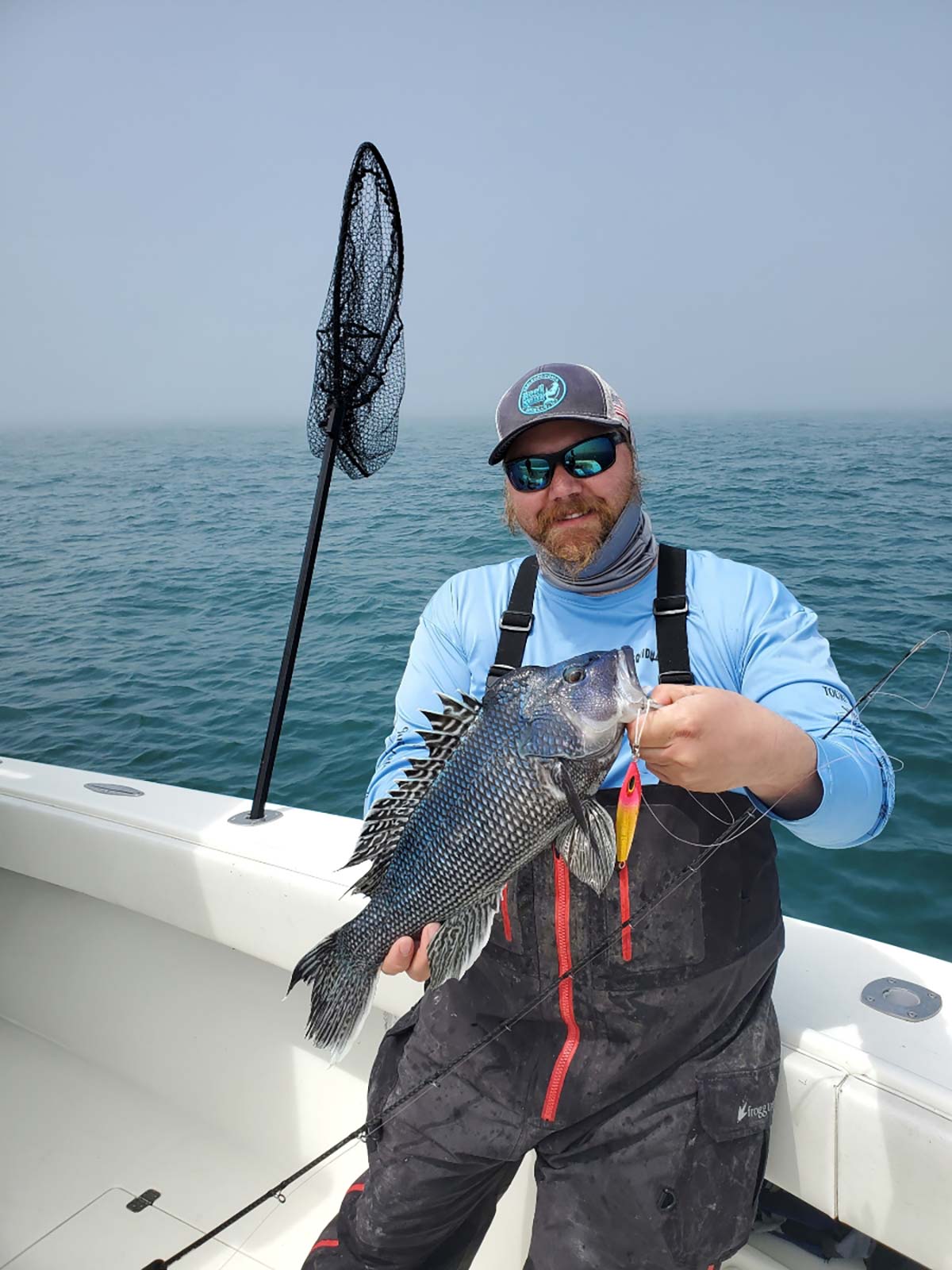
Depending on whether you are fishing inshore or offshore for sea bass will make a big difference in exactly which slow pitch jig you choose. For the angler who is looking to get into slow pitch jigging sea bass, I recommend you start in a cost-effective manner since you will need to pick out specific slow pitch gear. This tackle is specifically designed for this technique, and if you use the wrong tackle you are setting yourself up for failure before you’ve even hit the water.
When selecting tackle, you are going to need to look for a few things. In a slow pitch rod, you’ll find that it has a very soft tip which allows the jig to work properly, with plenty of backbone. For traditional fishermen who have been in the game for a long time, these rods are going to look like toys but believe me they are no joke. These rods allow you to have a feel of your jig like nothing you have ever felt before. In terms of a matching reel, it is still very important to look for key features such as high-speed, and one that balances well with your rod. A high-speed reel is a crucial part of slow pitch fishing as it allows for the tip of your rod to load up and propel your jig in the water, giving it the proper action.
As for the line you choose, it may seem like it does not matter but with this technique line is a make or break component. It is critical that when you select your line that it is thin and that you do not use any teasers on your leader as this will impede the action of your jig. This is often a very scary concept for many fishermen but is a necessity when slow pitching due to the fact that center-weighted jigs fall much slower than other jigs, and have more hang-time to scope out.
Inshore vs. Offshore
Now that you know the key features that you are looking for in slow pitch tackle and how it all comes together, you’ll next want to select an outfit for slow pitch jigging that best fits your needs. I will discuss what’s in my quiver, and what you should be looking to add to your arsenal depending on your needs. First off is deciding whether you’re going to be fishing inshore or offshore for sea bass, and believe me, this will make a difference in what tackle you select.
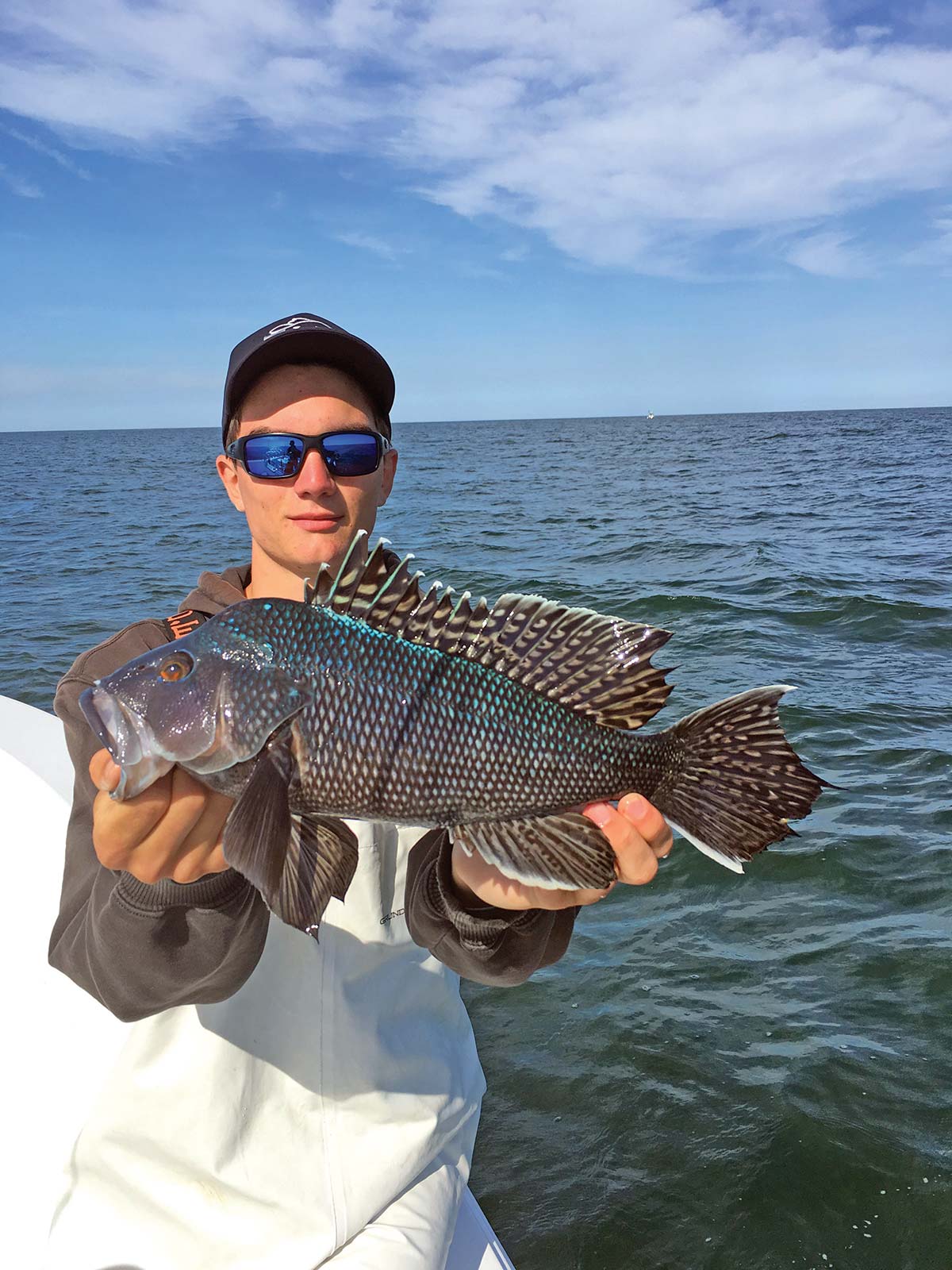
On the shallower, inshore grounds, one thing to keep in mind is that your tackle is going to be very light because you are dealing with very light jigs. Typically, a rule of thumb that I explain to customers at The Reel Seat in Brielle, NJ where I work is that the weight of your jig should be roughly about 1 gram for every foot in water depth that you are fishing. For example, when I am slow pitching sea bass inshore, I am typically in 60 feet of water therefore I’m using a 60-gram jig. For inshore fishing I recommend your jigs being anywhere from 40 grams being the lightest to 70 or 80 grams being the heaviest. The jig which I fish most of the time is the 60-gram Major Craft Jigpara, 60-gram Lana Jig, and the 40- to 60-gram Nomad Design Buffalo Jig. These jigs not only produce quality fish but they attract an absurd number of bites.
When selecting a rod, keep in mind what gram jigs you plan on using; typically the 40- to 80-gram jigs I mentioned will require you give serious consideration to the taper you are looking for in the rod (soft tip with backbone). I suggest a rod with a gram rating of 50- to 160-grams, which is what my inshore slow pitch rod is rated. I use the Shimano Grappler LJ 50 to 160 grams as my rod of choice for inshore slow pitching. This rod has a soft tip but plenty of backbone making it ideal for my purposes. As for the reel – the one with a higher gear ratio as noted before – I use the Shimano Ocea Jigger 1500, which is a perfect match with my rod and the high speed makes it ideal for slow pitching. On this reel I put 20-pound Max Quatro braid with a 30-pound leader, and no teasers! This line is thin in diameter and is a perfect match for slow pitching, allowing my jig to make it to the bottom without being scoped out.
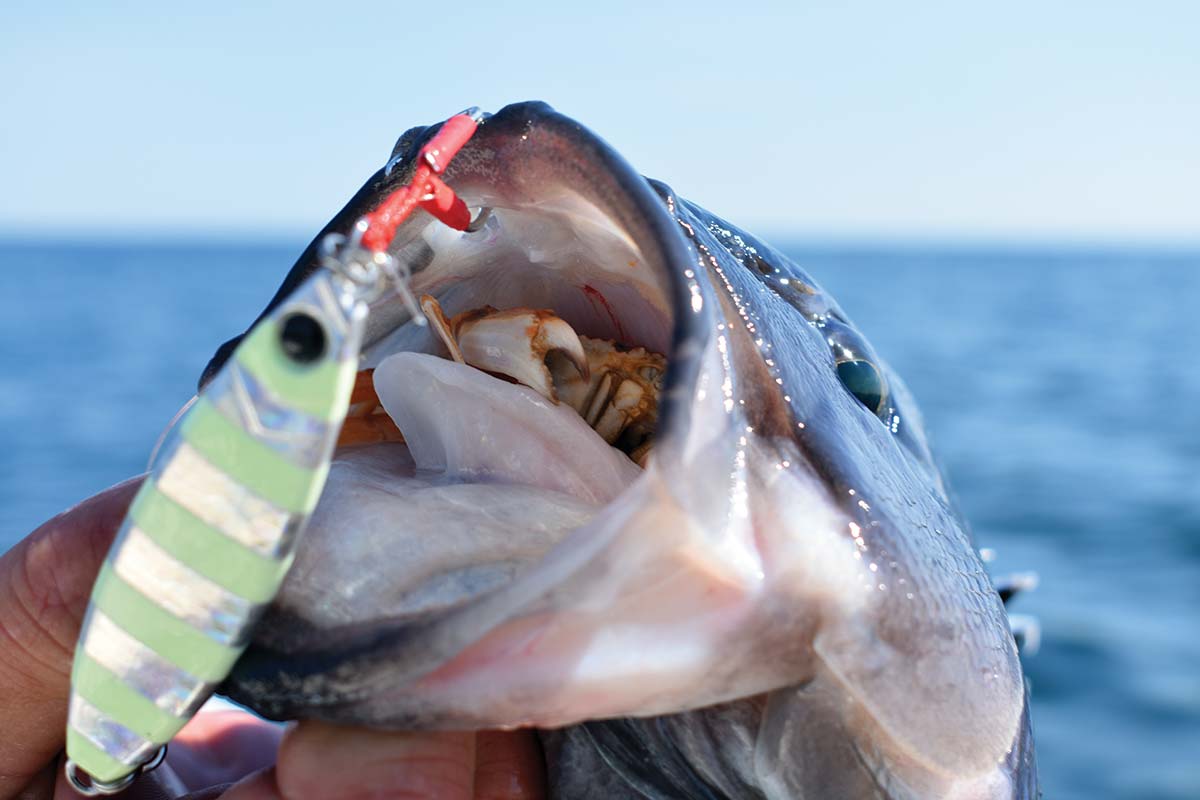
When offshore slow pitching for sea bass a few things change. Since you are in deeper water you are going to need a heavier jig, which entails a slightly heavier rod capable of working jigs in the 90- to 180-gram range. Before I head off on an offshore sea bass trip, I make sure that I have these slow pitch jigs ready to go. The first jig I would start with is a Lana jig in the 125- to 155-gram range, then eventually work to a Sea Falcon Z Slow.
When picking out a rod, once again, you are going to match the gram weight of the jigs you plan on fishing. Ideally, you want a rod that can work jigs up to 180 grams that still has a soft tip with plenty of backbone. I personally used a Shimano Game Type J 160 G that I find perfect for the jigs I will be working offshore. That’s paired to Shimano’s larger Ocea Jigger 2000 which is spooled with 30-pound Max Quatro Braid and a 30- or 40-pound leader. Again, no teasers!
If you are just getting into slow pitching, I recommend you start with more budget friendly tackle unless you are very committed. For those getting into slow pitch jigging I recommend you take a look at the Tsunami slow pitch rods which are very affordable, yet also a quality product which allows you to experience this technique without breaking the bank.
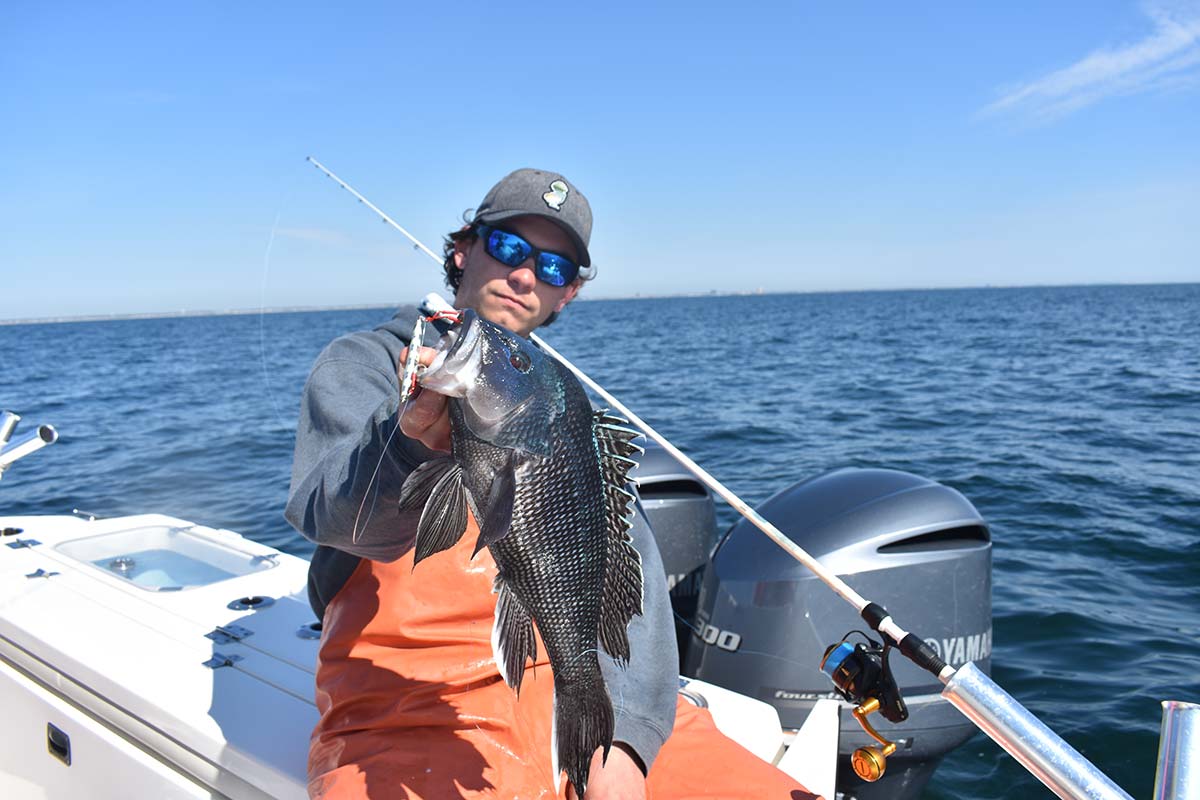
The Slow Pitch Technique
Now that you’ve picked out the right setup capable of working your jig correctly it’s time to test it on the water. The high-speed reel you have picked out is a huge part of this technique. I want you to keep in mind each angler has their own style of how they go about slow pitching and no one way is wrong or right. When dropping the center-weighted jig, I tend to feather the spool, which means I apply light pressure allowing my slow pitch jig to shoot straight down to the bottom of the water column.
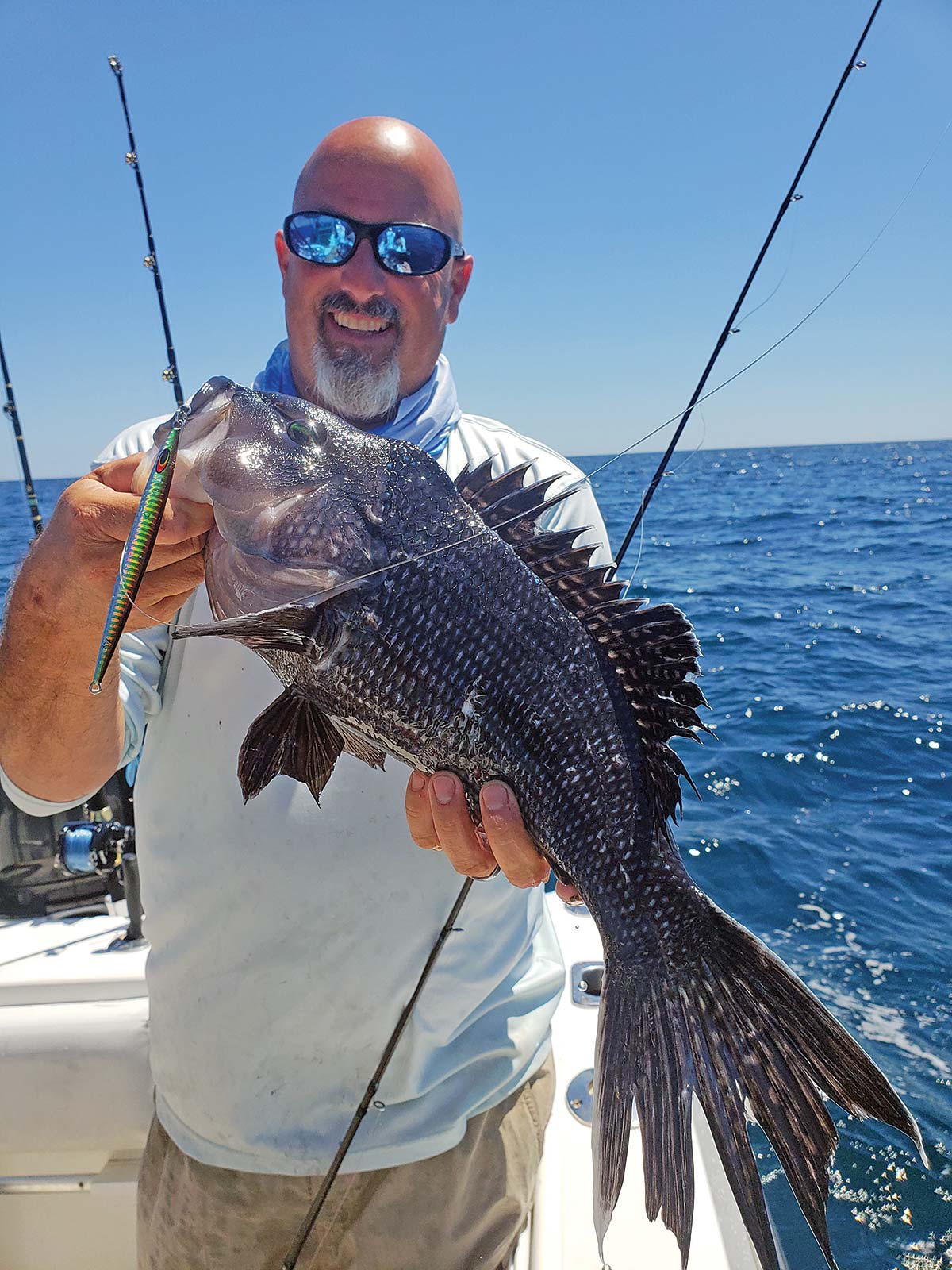
Once I have reached the bottom, I tend to take one crank immediately to distance myself from the rough structure. From there I will take one snap of my rod vertically, I do this to test the water as I call it and see how hot the bite is. From there my high-speed reel will take over. It is popular to do quarter or half crank turns of your reel allowing your rod to bend and work the jig for you.
I repeat this process working a specific portion of the water column until I get a bite. Once I’m hooked up, I’ll point my rod at a 45-degree angle towards the water and reel slow and steady. I find this to be a crucial part of the entire process. I see many anglers wanting to pump the rod, which inevitably causes them to pull the hook on the fish.
Over the years, I’ve put away vertical jigs when it comes to bottom fishing because at the end of the day slow pitching will produce better numbers and quality fish day in and day out.
Most Atlantic Coast states reopen their black sea bass fisheries in the middle of May, though in Rhode Island and New York anglers will have to wait until June for the first “pitch” of the season. But if you’re looking to revamp your tactical lineup for black sea bass, I highly recommend giving the whole slow pitch concept a shot.




